Article's Content
When Mike Cannon-Brookes and Scott Farquhar founded Atlassian in 2002 on the back of $10,000 in credit card debt, they had no idea the company would grow to become the giant that it is today.
As of the beginning of 2022 — 20 years after it was founded — Atlassian has grown to a $33 billion valuation while raking in $2 billion in revenue in 2021.
The craziest part about Atlassian’s growth is that they’re doing all of this without a traditional sales team.
“So, how do they market their products?” you ask.
Aside from building truly remarkable products that spread through word of mouth, Atlassian focuses on using its website content to reach and promote its products to its target audience.
Atlassian’s website currently ranks for 766K keywords and attracts over 4.5 million monthly visitors. You’d have to pay around $7.1 million monthly in pay-per-click ads to acquire what they do on the back of SEO and organic content.
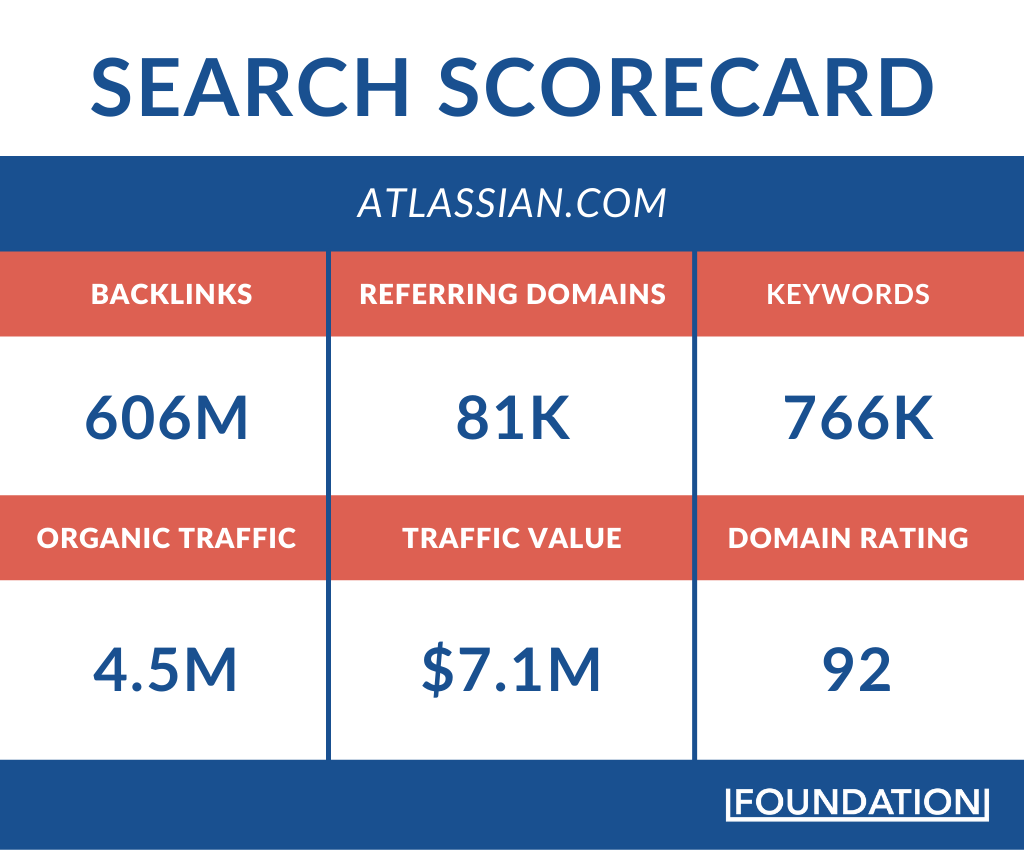
In this piece, you’re going to learn:
- The secret behind Atlassian’s traffic engine and one of the most under-rated methods for building an SEO moat.
- How Atlassian creates content to attract the kind of audience they want.
- How you can build marketing collateral that’ll help you sell your products, even if you don’t have a traditional sales team.
Let’s begin.
Uncovering Atlassian’s Traffic Engine
Companies usually employ different strategies and methods to achieve their marketing goals through content.
For instance, Zapier uses listicles to drive traffic and leads, while Airtable targets long-tail keywords to build its SEO moat.
And Atlassian?
They use resource hubs.
But these aren’t just any resource hubs that target the most popular or easiest keywords. Not at all.
Atlassian’s resource hubs speak directly about specific topics their core audiences care about and help Atlassian target its ideal buyers and customers all year round.
The result? A consistent pipeline of leads and millions of dollars in traffic value.
For instance, the resource hubs for agile, IT service management (ITSM), and Git are among the most valuable and heavily trafficked pages on the Atlassian website.
The agile resource hub ranks for over 84.8K organic keywords, attracting over 597K organic visitors and valued at $1.7M, all without running any ads.
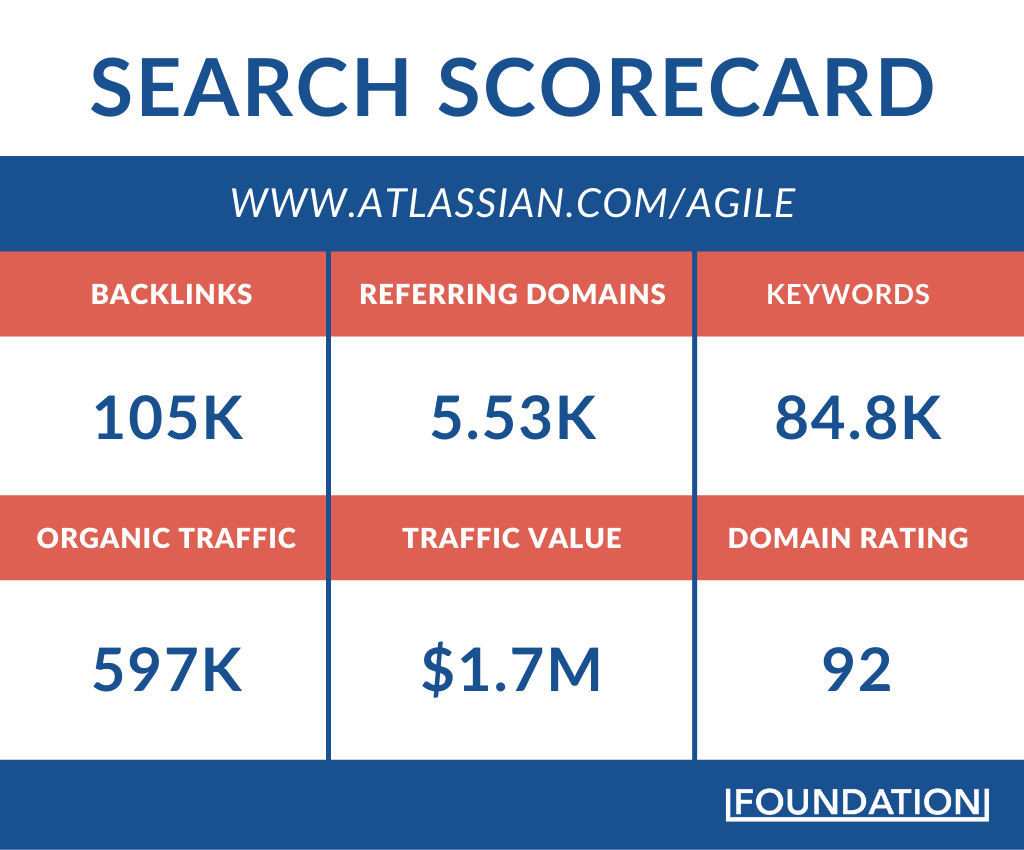
The hub for Git ranks for over 76K organic keywords, attracting over 822K organic visitors and valued at $1.2M.

And the ITSM hub ranks for over 14.9K organic keywords, attracting over 37.3K organic visitors and valued at $416K, still without running any ads.

Now you’re probably wondering why they didn’t just create blog posts like every other company?
Atlassian chose to develop these hubs because they offered users an easier way to consume content.
Consider that blogs usually follow a chronological order, making it hard for people to find content that’s not on the front page.
Aside from making it easier for their audience to find relevant content, here are some other reasons it made sense for Atlassian to create these resource hubs.
Focus on a specific product or topic
Atlassian has many tools and products, including Trello, Jira, and Confluence, under its name. As such, it might get confusing if they try to talk about all of their products in one place. And that’s where these hubs come in.
With the resource hubs, Atlassian could focus each page on a specific topic. For instance, once a reader lands on Atlassian’s Git hub, they automatically know they’ll be learning about everything Git.
Speak to a particular segment of your audience
If you try to catch two rabbits at the same time, you’ll end up with none. Atlassian understands this, and that’s why they don’t try to market to everyone — even within the project management space.
Instead, they created these hubs to focus on their audience’s core segment of project managers and engineers who manage teams and deploy software.
Build subject matter expertise (SME)
These resource hubs help Atlassian build expertise and topical authority because they’re dedicated to specific topics their audience cares about. And as their audience continues to gain consistent value from those sites, Atlassian’s authority grows.
Breaking Down Atlassian’s Resource Hubs
Let’s now dig deeper into what we found with Atlassian’s resource hubs, specifically the keywords they target, their structure, and who they were created for.
Keywords They Target
Atlassian has done a fantastic job of targeting both head and long-tail keywords their core audiences are searching for online.
For the sake of this teardown, let’s focus on the agile resource hub, which also happens to be the most valuable hub on the entire website.
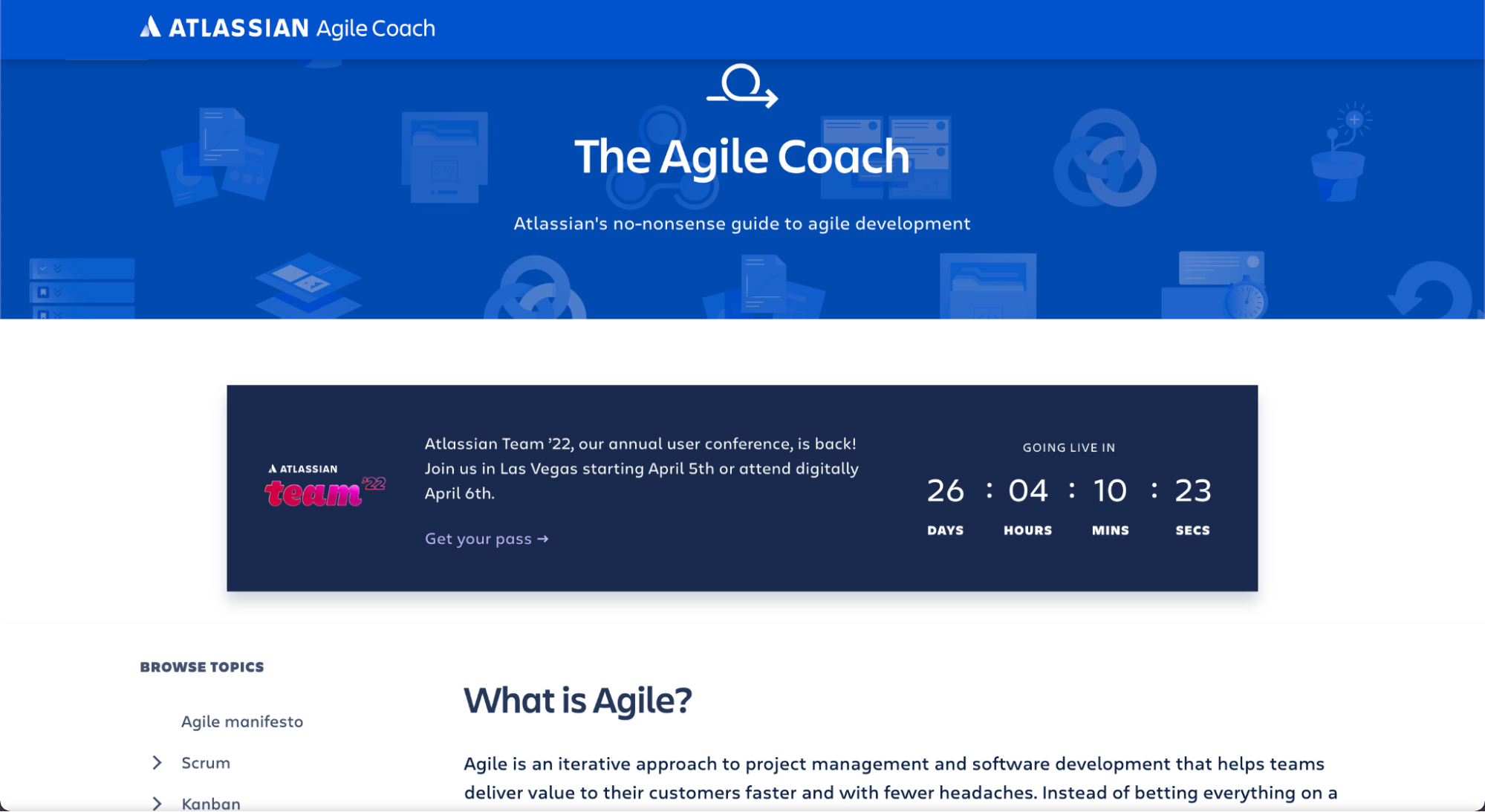
Every month, over 597K people find this hub while searching for one of the around 84.9K keywords it ranks for through search engines.
For example, one of the hub’s sub-pages ranks number one for “Kanban,” which gets over 45K monthly searches. This results in over 18K visits to Atlassian for that single keyword.
Here’s a view of the highest-performing pages under this hub:

Not all of the keywords the agile resource hub ranks for will be head terms that attract thousands of monthly organic traffic.
Many of the sub-pages under the agile resource hub rank for long-tail keywords like:
- “difference between scrum and kanban”
- “what do product managers do”
- “program management vs. project management”
- “learn burndown chart with Jira software”
When you take another look at the keywords Atlassian targets, you’ll see that they didn’t just create these pages because of the keyword search volume — even though the hub would cost over $1.7 million if they were to use paid ads to rank for these terms.
Instead, they focused on the intent behind those keywords.
People usually have one of these four intents when searching online:
- Informational: The searcher is looking for information about a topic (e.g., “what do project managers do”).
- Navigational: The searcher is trying to get to a specific website or page (e.g., “Atlassian website”).
- Transactional: The searcher is looking to buy something. (e.g., “buy project management software”).
- Investigational: The searcher wants to compare or review different assets or solutions (e.g., “kanban vs. scrum”).
For Atlassian, they focus more on the informational and investigational intents to drive traffic for their website — all of these have helped them build an impressive SEO moat.
Next, let’s talk about their content structure.
Content Structure
The design of Atlassian’s hub highlights its commitment to content excellence. Other results on the SERP simply can’t compare.
Let’s examine their hub’s structure by continuing with the example of the agile resource hub.
This hub starts with a general overview of agile, which addresses their audience’s informational search intent. The left side of the page lists other topics related to agile, such as kanban, scrum, product management, software development, and agile marketing.
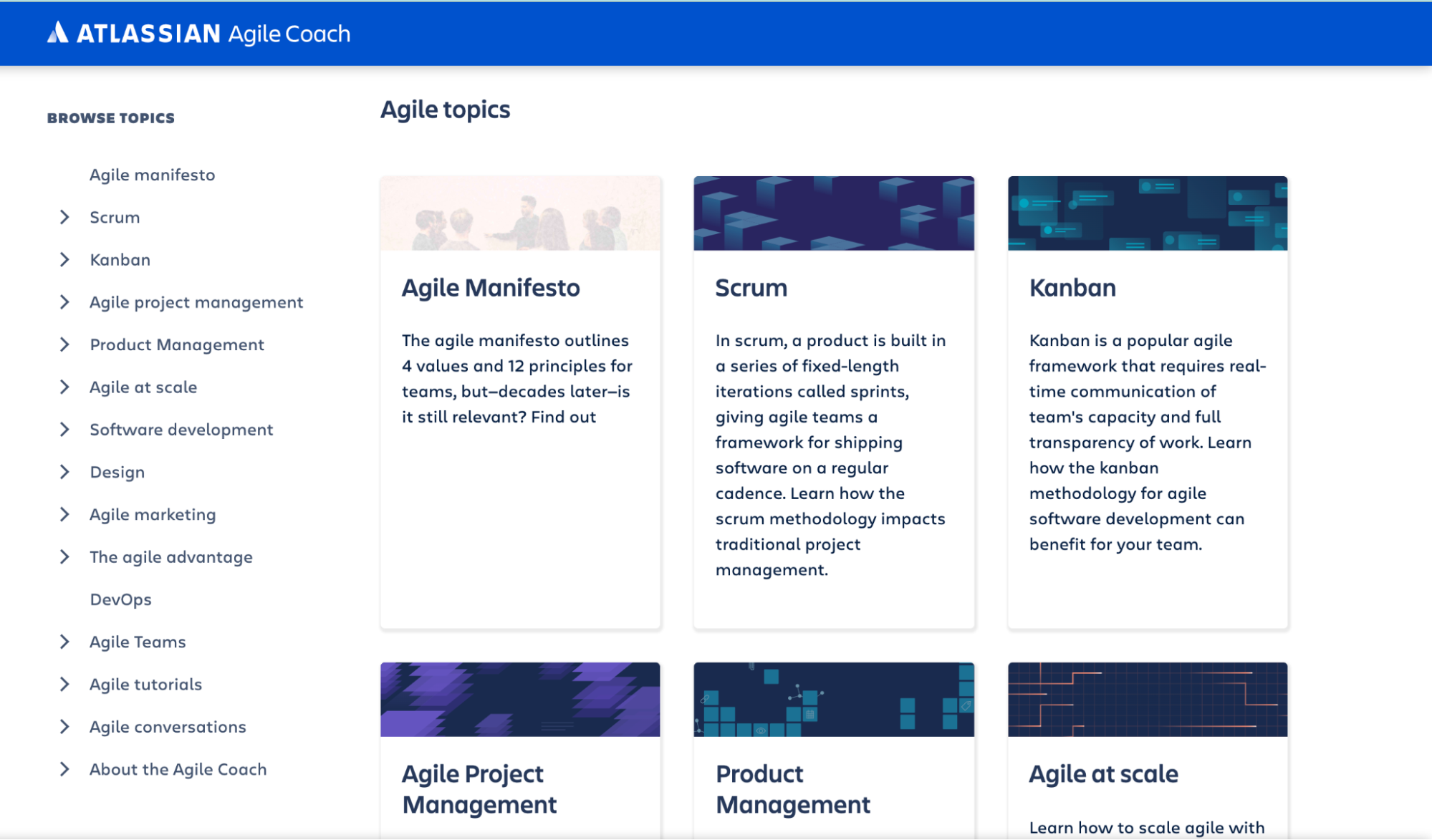
Each of the categories in this hub targets both head terms and long-tail keywords, as we talked about earlier.
Atlassian does well to structure the pages in a manner that makes it easy for web crawlers to understand what the page is about while maintaining an optimal experience for users.

A typical Atlassian hub page starts with (1) a title and subtitle/heading that tells the reader exactly what the page is about — in this case, scrum. There’s no way anyone who comes across this page won’t know what they’re in for.
Next, (2) they ask a question that contains the primary keyword for that particular page, e.g., “What is Scrum?” It’s simple yet effective.
They then answer the question with easy-to-understand words and sentences containing illustrations and the right amount of industry jargon.
To break the blocks of text, they add a video (3). Although often overlooked by marketers, adding videos to your content helps improve the experience for your readers. While many might love reading, others learn better by watching videos. Adding videos helps you address your audience’s different learning styles.
On the SEO side, embedding videos in your posts help you increase the dwell time on your pages, which positively affects your site’s ranking.
That’s not all. Aside from the categories on the side, Atlassian also features the different sub-pages under the Scrum topic for readers who want to jump to specific sections of the hub quickly.
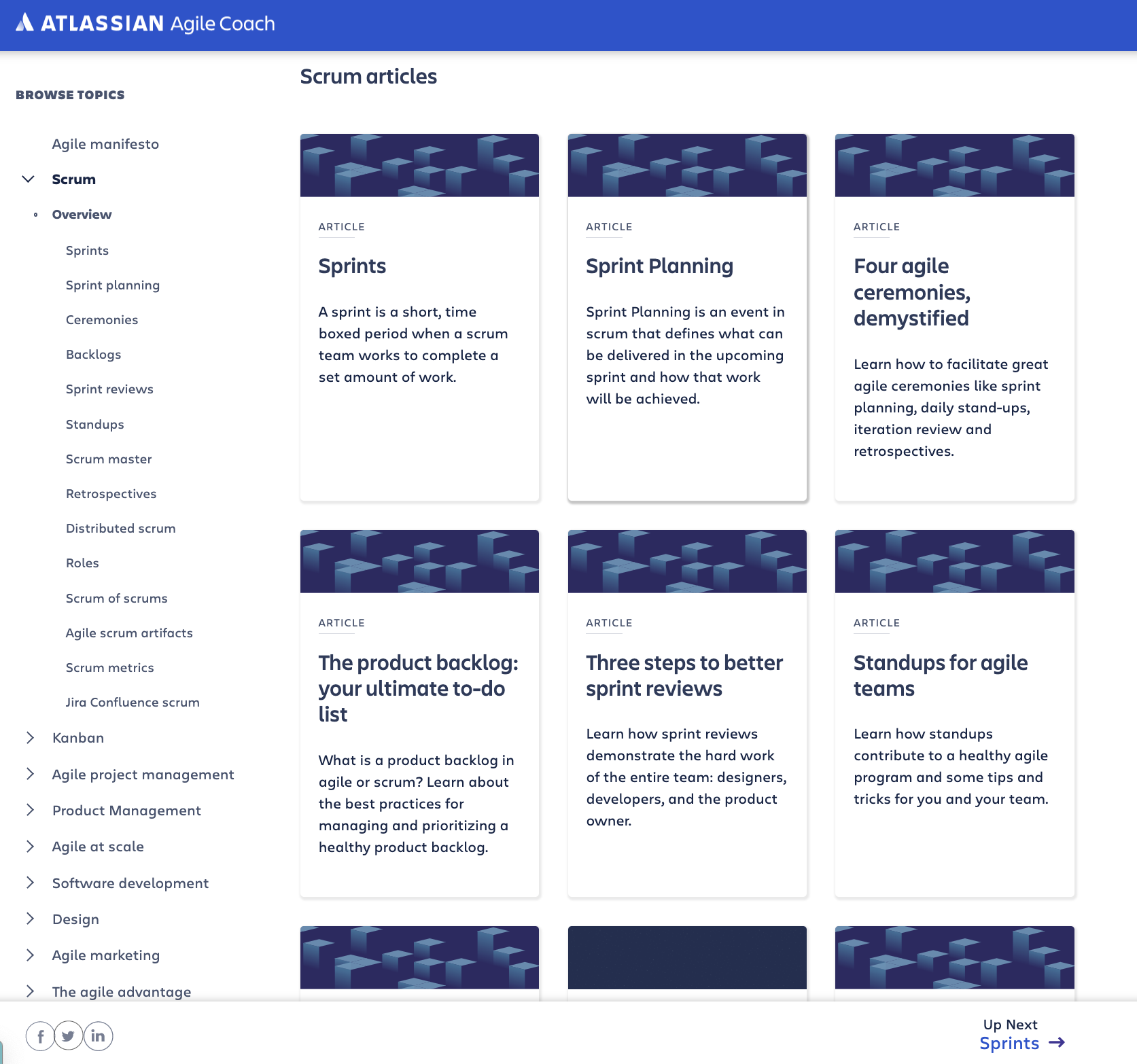
What follows are H2s, H3s, and paragraphs that speak directly to their audience’s struggles. This extra content helps Atlassian build their internal linking and rank for secondary and long-tail keywords.
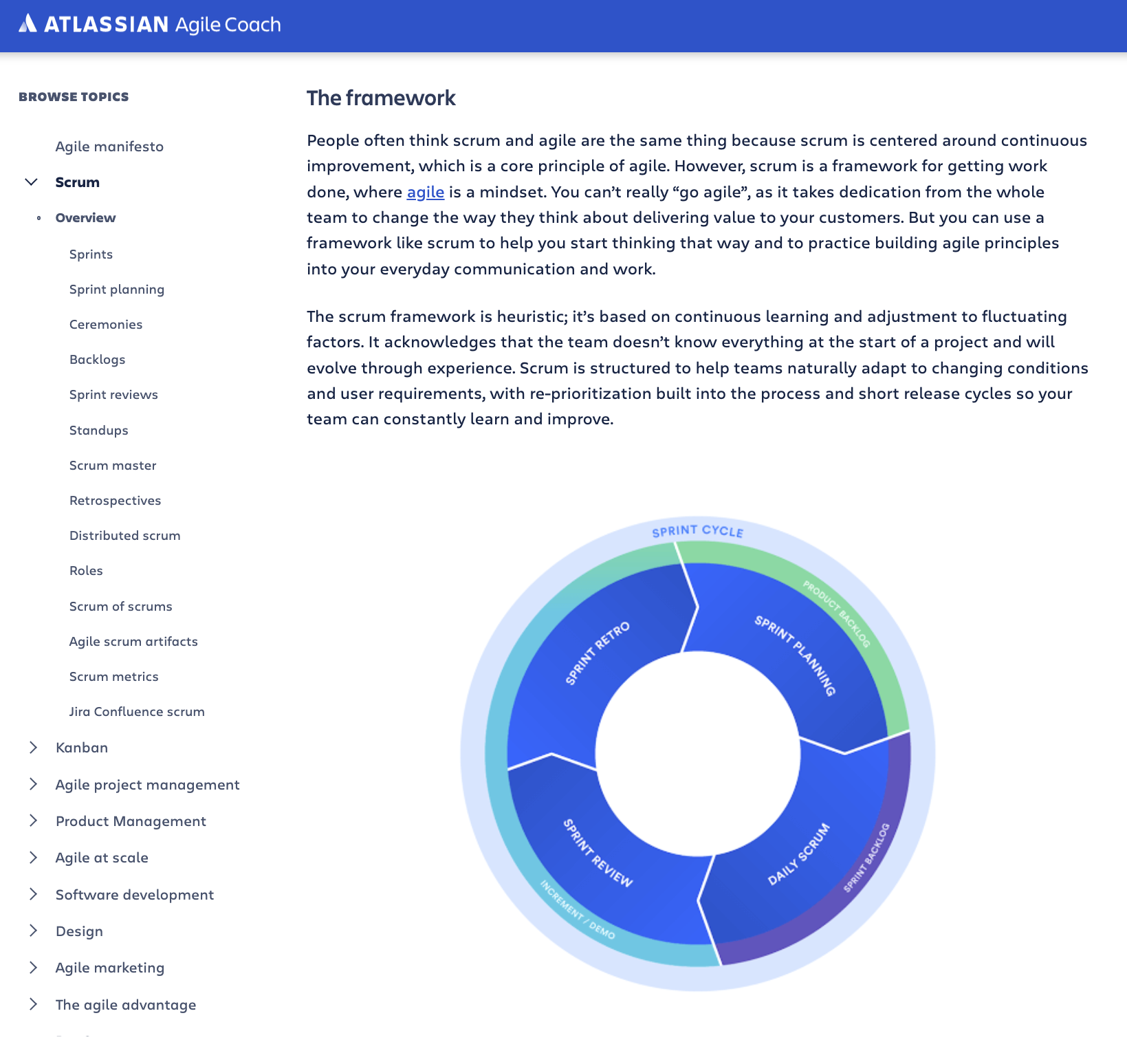
Added to the things these hubs and sub-pages do right is that they follow a similar format and are scalable.
Here’s a replicable structure for the sub-pages under atlassian.com/agile.
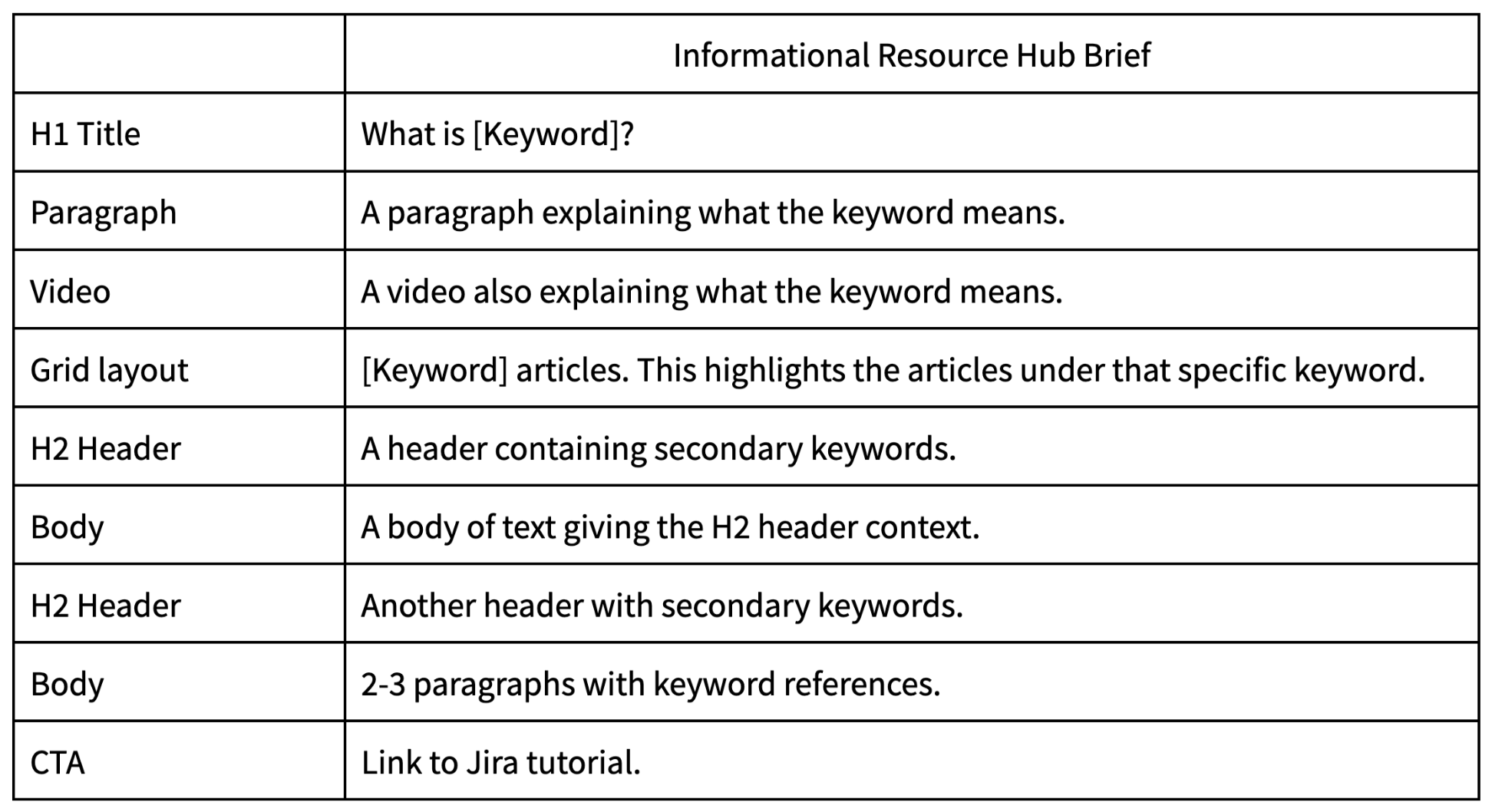
And here’s the structure of the individual articles under each sub-page that you can replicate.
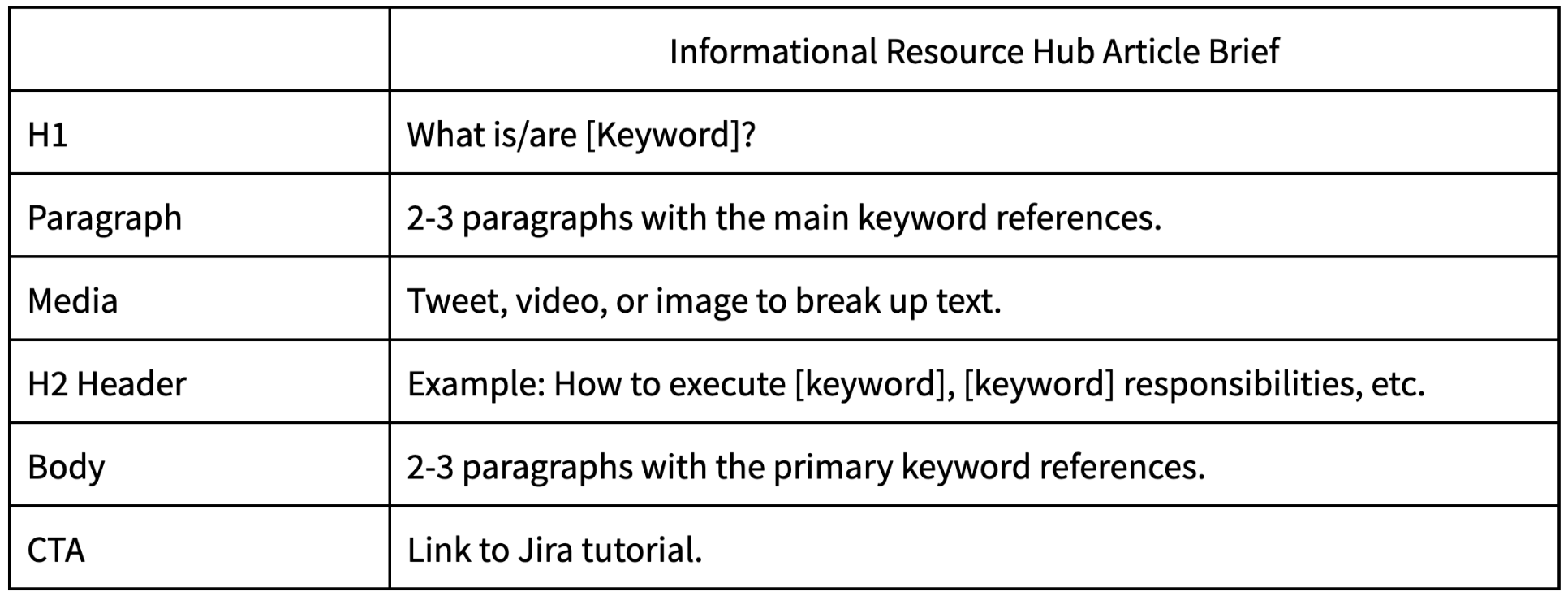
You don’t have to copy this structure to the letter. Instead, use it to inspire yours and adapt it to your business needs.
Who They Create For
The last thing that makes Atlassian’s resource hubs stand out is who they create them for.
These hubs were created for DevOps engineers and project managers familiar with software tools like Trello and Jira.
The sites are also designed such that even if a beginner project manager or DevOps engineer comes across it, they’ll have all the crucial information they need to get started or improve.

Let’s now consider how you can apply what we’ve learned so far from Atlassian.
Learn From Atlassian: How to Create Resource Hubs That Work
Here’s what you need to do to build out resource hubs like Atlassian’s.
Understand Your Core Audience
Knowing who you’re creating for is one of the most crucial steps before building a resource hub, or any content asset for that matter.
Without thoroughly understanding your core audience, you simply cannot achieve your marketing goals, whether to increase organic traffic, shorten time to conversion, or improve brand awareness.
And to understand your audience, you need to create a buyer persona or customer avatar.
A buyer persona helps you understand your ideal customer’s pain points to present your brand as the solution.
Here’s a simple step-by-step process to create a buyer persona that works:
- Hold sessions with your sales/marketing teams to find current customer segments that are getting the most value from your products and services.
- Interview customers from the segments in the sessions with your sales/marketing teams. You can also find more audience insights by running surveys, checking communities where your audience hangs out, or popular review sites like G2 and Capterra.
- While researching your customers, identify the common themes about their demographics. During customer interviews, ask discovery questions about their pain points, the urgency of their problems, where they look for help, what influences their decision-making, and the challenges that might hinder their decisions.
- Collect and store as much information from your research as possible. No tool is off-limits. You can use call recordings, screengrabs, Google Sheets, and so on.
- Analyze the results of your research to create your persona.
- Share your new persona with your team. Sharing internally helps everyone within your organization understand the persona better and look for ways to consistently deliver value to this persona.
Once you’ve created your persona, you’ll know what type of content you need to attract them. In Atlassian’s case, their persona includes project managers and DevOps engineers who want to learn more about the tools and methodologies that help them do their work better.
Create Link-Worthy Content
You can think of backlinks as endorsements from other websites that show Google that your site contains valuable and relevant content. As such, backlinks from high-authority websites improve your content’s chances of ranking high on the search results page.
Marketers at Atlassian understand this, and that’s why they create the kind of content you wouldn’t find anywhere else. To make their content unique and link-worthy, these resource hubs were written by experts who have firsthand experience with what they’re writing about.
The results? The agile hub attracts over 105K backlinks from sites like Microsoft, New York Times, Zendesk, Gov.UK, Calendly, HubSpot, and thousands of other sites.
So instead of hiring writers from content mills who paraphrase the top 10 Google results, look for those who have subject matter expertise to help you create content others would want to link to.
Aside from external links — which you have no control over — it’s also ideal to use internal linking within your website to help Google bots crawl them better.
For instance, agile has over 90 internal links from other pages on the Atlassian site.

Launch
To launch, Atlassian shared their new resource hub on their email list, which already had thousands of subscribers. They also promoted the new sites through content syndication (like this post on Inc), influencers (social), and guest blogging on sites like HubSpot.
While you might not have the same resources as Atlassian, the key here is to keep promoting your work.
Create once, distribute forever.
Key Takeaways
Creating resource hubs that work is no easy feat. And that’s why it’s impressive what Atlassian has been able to do with theirs.
These hubs have helped them create an SEO moat so large that they dominate their niche’s search engine results page for head and long-tail keywords.
Aside from traffic, these hubs have also aided Atlassian in catering to its core audiences’ specific needs. As such, people can find answers to almost all the questions they have about the topics Atlassian talks about.







